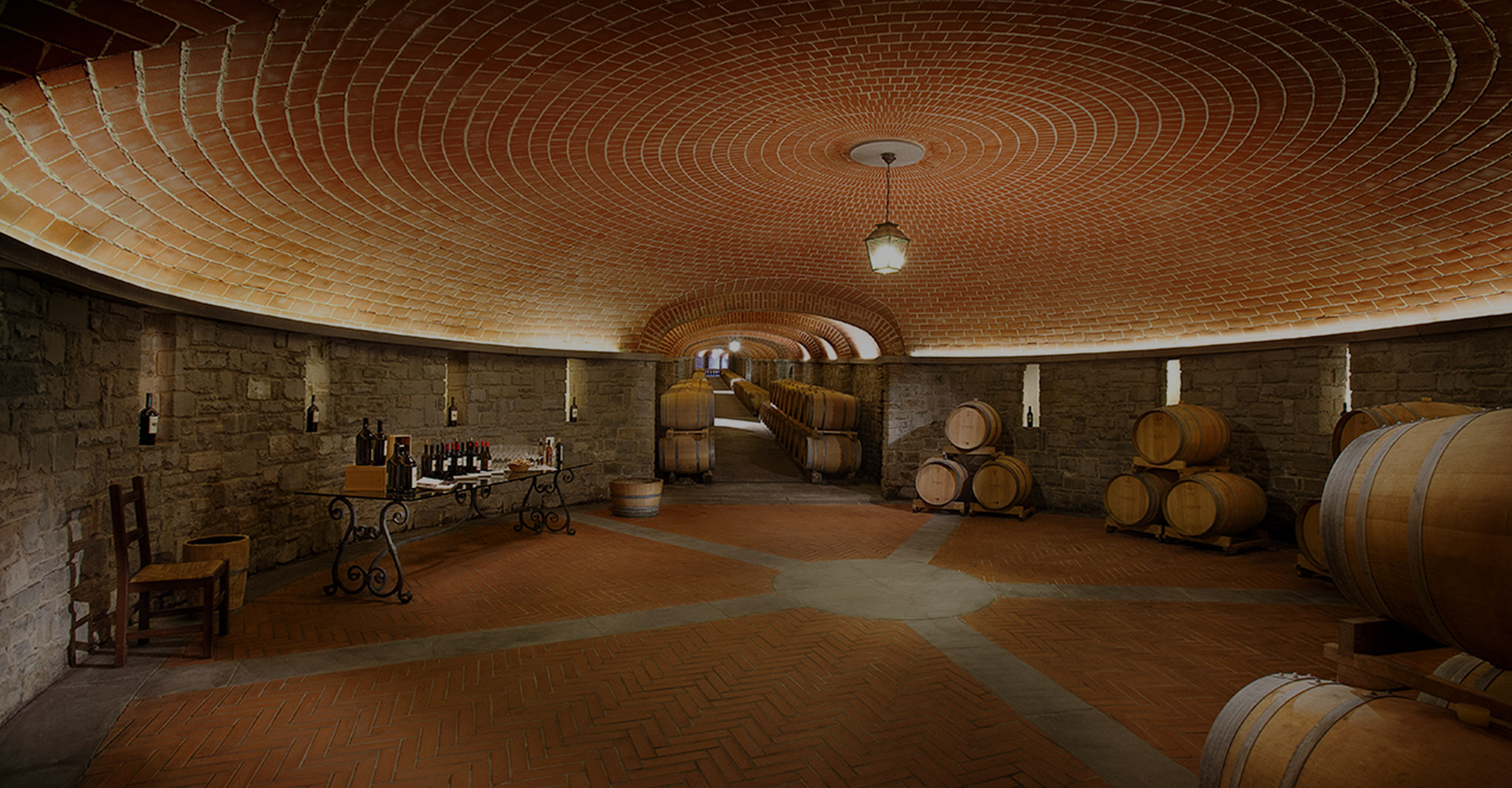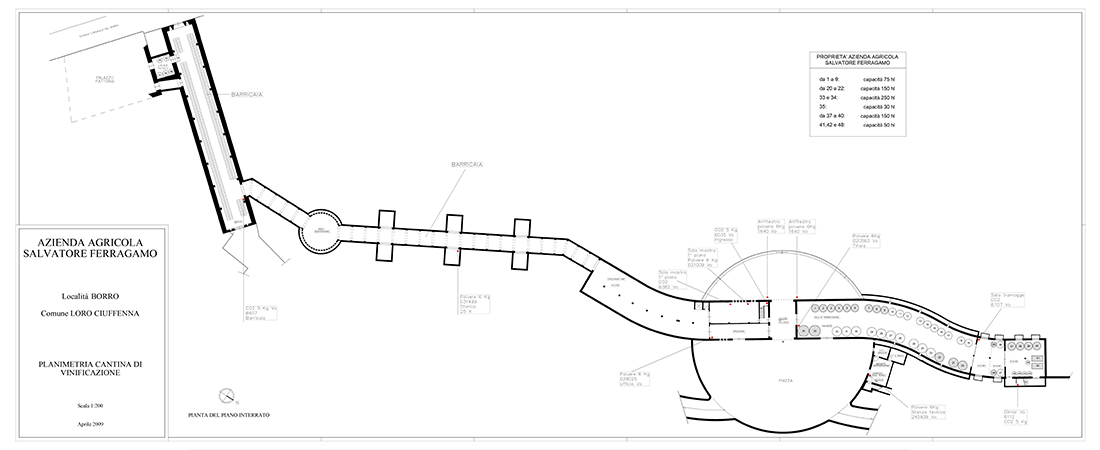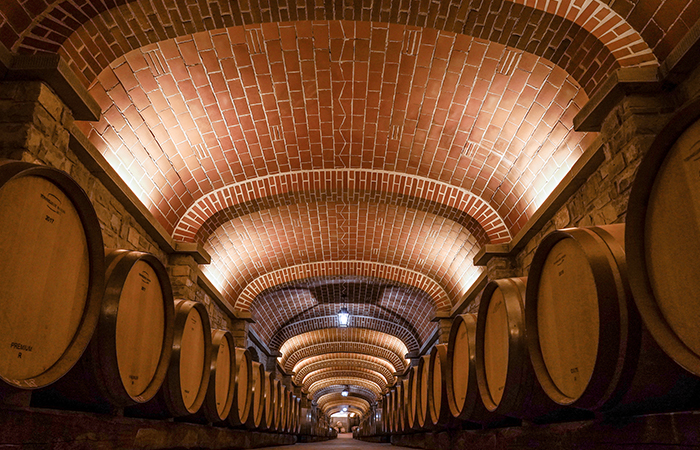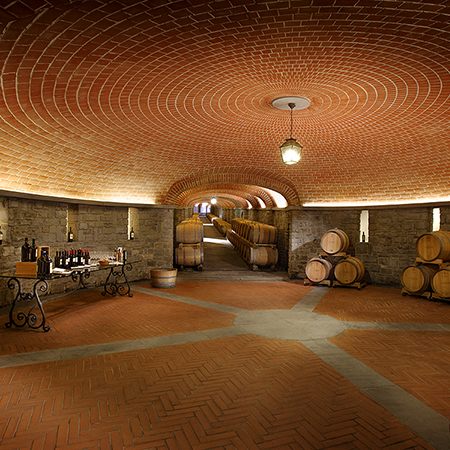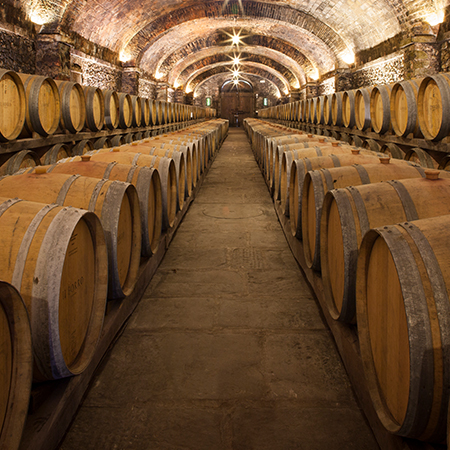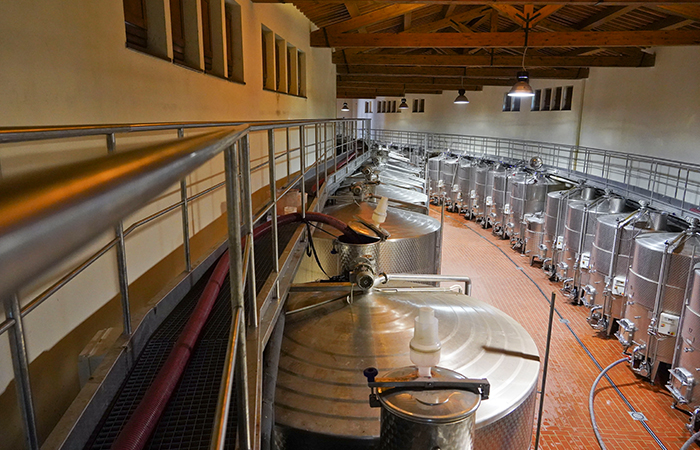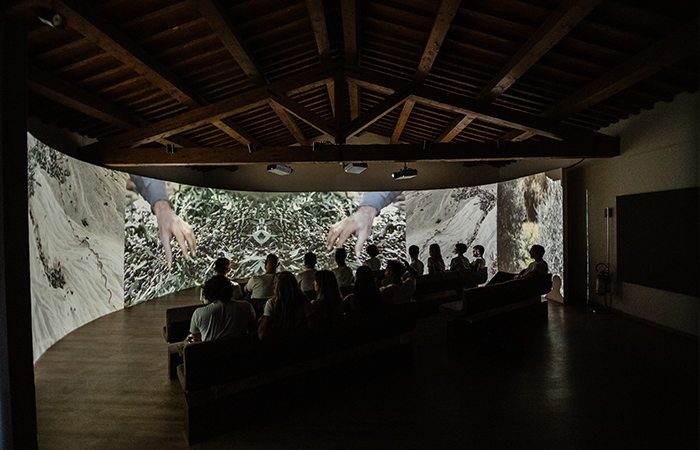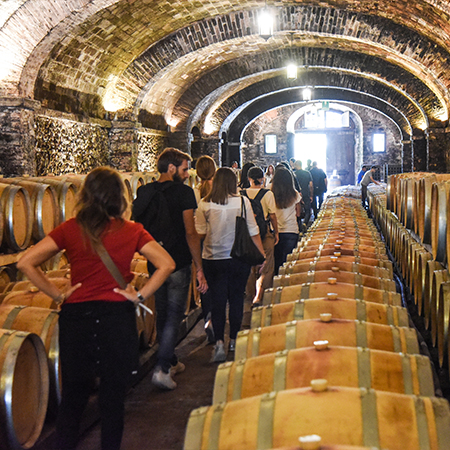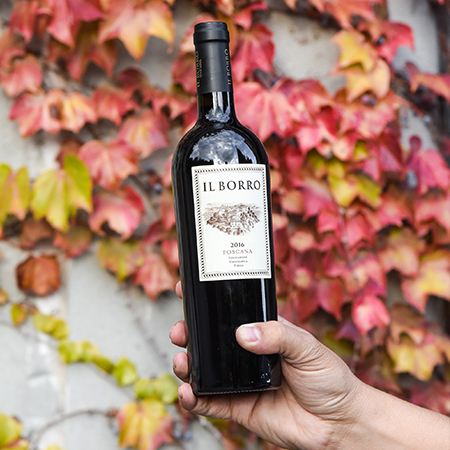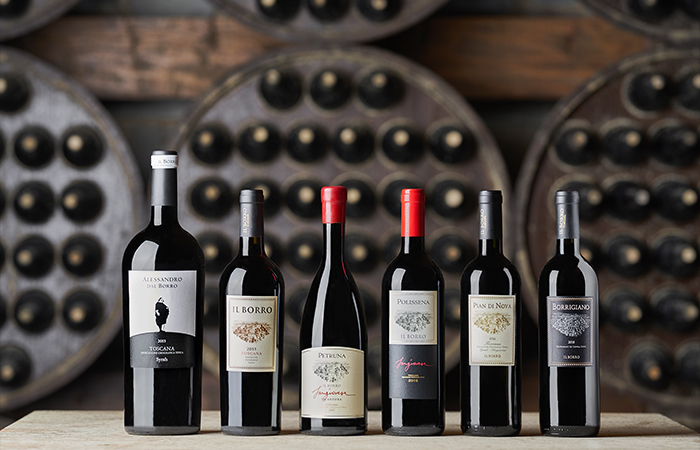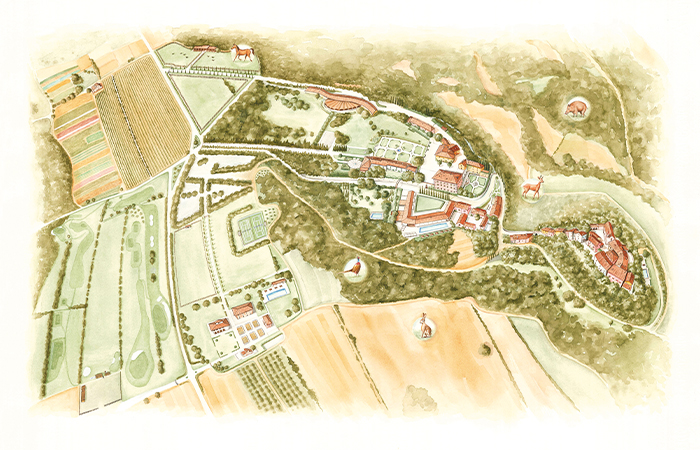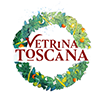The origins of Il Borro have been lost in the mists of time and countless illustrious figures have been part of its history.
Nestled in a land brimming with art and culture located not far from Tuscany’s main cities (Florence, Arezzo and Siena), Il Borro is a window that opens out onto history, a fresco of a distant world. The Medici and the Savoy, and since 1993 until nowadays Ferruccio Ferragamo and his sons Salvatore and Vittoria, have safeguarded its preciousness, keeping the estate’s buildings and charm intact and turning Il Borro into a oasis oasis strongly suited to respect for the environment, entirely organic since 2015.
With 1100 hectares of extension - 85 of them dedicated to viticulture - Il Borro is immersed in the heart of the Valdarno, rich territory that offers its visitors unspoilt woods, and rolling hills. A unique terroir for genesis and morphology, for centuries the basis for the cultivation of the vine and for the production of winesof excellence, as recognized in 1716 by Cosimo III de Medici and more recently from the birth of the Valdarno DOC. Since 2012 Il Borro is also part of the Relais & Châteaux Association thus confirming the top level in the art of hospitality and cuisine.
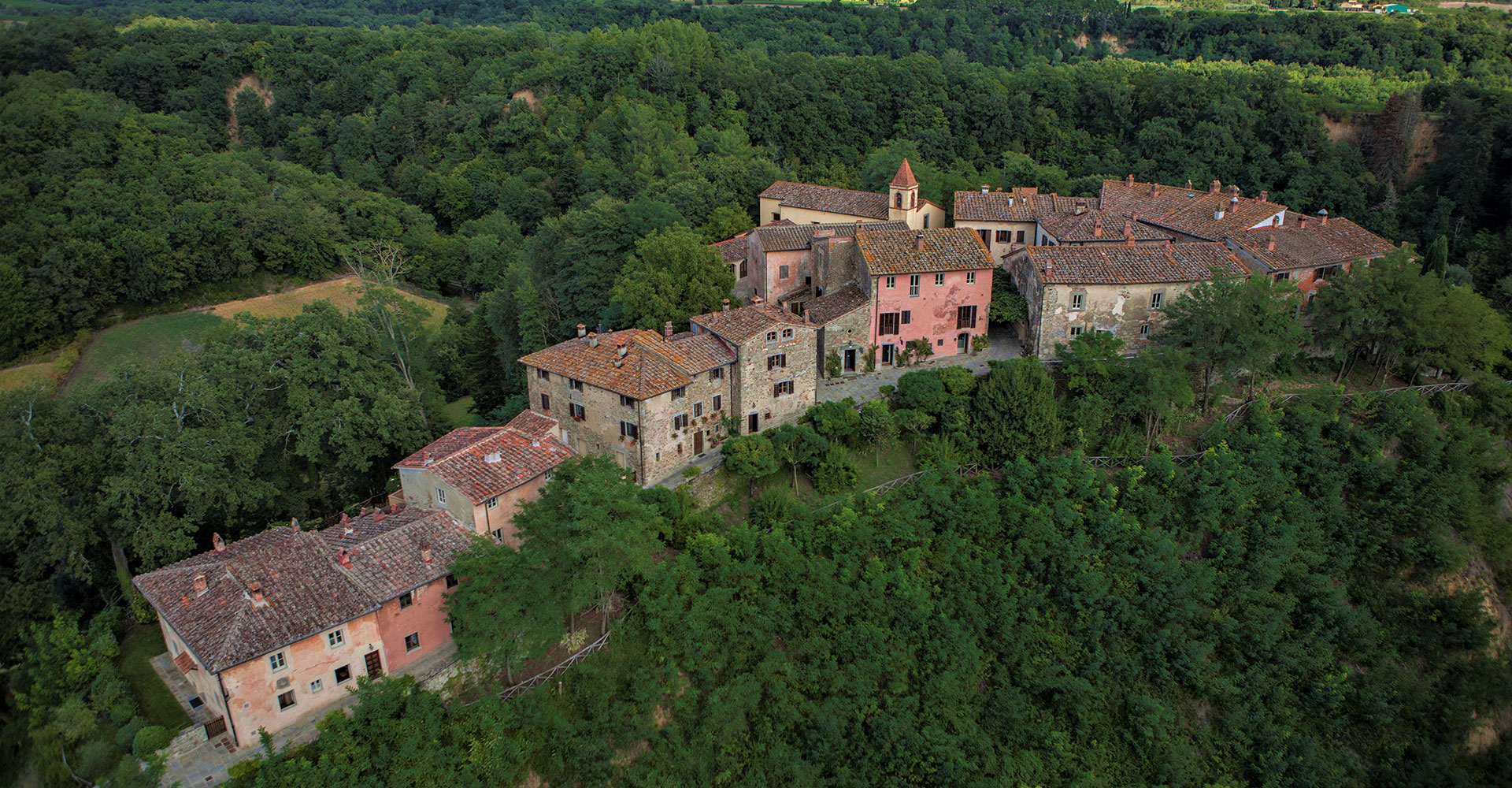
Project
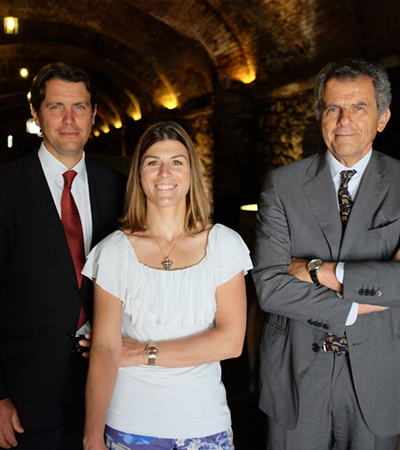
The cellar of the Il Borro estate covers 3,000 m2, surrounded by greenery, on flat ground measuring about 15,000 m2 planted with pine trees. The location was chosen due to its centrality near to the old farm and its harmonious connection to the old underground cellar. The building consists of a first structure, measuring 2,300m2, partly underground, used to ferment and bottle the wine. It has a reinforced concrete support frame with brick plugging (plastered and painted in a sandy yellow colour to fit in with the pre-existing surroundings. It has a wooden roof on two levels supported by trusses, with a roof above in tiles and pairs of bricks. The curvilinear plan follows a side road and considerably reduces the horizontal development on sight. The road that runs by the cellars and leads to the Reception of the estate opens out into a circular piazza sunken into the ground, paved in herringbone-laid terracotta bricks. The approach emphasizes the main entrance to the cellar, marked by a large arch on the building’s front. Here you can access, on one side, the fermentation area, on the north side, and the bottling and storage zone on the other side (south). Beyond the arch there is a large indoor area, equipped with semi-circular terraces for events, meetings and shows.
The first floor of the cellar is used for cultural events at Wine & Art Gallery, as the owner’s love of art has led to the creation of an interesting collection of wine-themed engravings. The entire complex is therefore intended no longer as a place of work only, but as an environment multifunctional strictly connected to the estate.
On the south side of the cellar, a corridor that is more than 80 metres long, completely underground and slightly sloping, flanked by hundreds of barriques and with a series of lateral cells on both sides: it leads to the old subterranean cellar. The tunnel, used to age the wine, is paved in stone slabs and has stone-clad reinforced concrete walls with vaulted ceilings. Halfway along the tunnel, where the underground walkway changes direction, a large, vaulted circular space is where the wine tasting takes place. The tunnel flows into the old cellar dating back to the 1700s, a single vast environment that hosts barriques for aging and pupiters for quality sparkling wine. The exit is on the road level, in correspondence with the La Corte area which houses a restaurant, the SPA, and the Boutique and Bottega where Il Borro products can be purchased.
Hospitality
Tours always start with a visit to the Wine & Art Gallery, a cultural space that hosts Ferruccio Ferragamo’s private collection of etchings dedicated to wine and its representations. An emotional movie introduces the visitor to the works of names like Mantegna, Dürer, Rembrandt, Manet, Picasso and Warhol, and to the 50 watercolour views of the Borro by the artist Paquito Forster. Always led by our staff, you will then visit the winery and enjoy a unique tasting organized 8 meters below the ground level. All tastings are customizable and combinable with other services on the estate. The Borro is in fact part of the Relais & Châteaux Association and includes exclusive suites inside the medieval village and at Aie del Borro and two luxurious villas. Moreover 2 restaurants - the Osteria del Borro and Il Borro Tuscan Bistro, the Spa La Corte and it offers multiple activities in the open air, sports, craft workshops and exclusive experiences.
Wines
Since 2015, Il Borro is certified organic and subscribes to an eco-sustainable philosophy, a feature reflected in the authentic taste of our wine and the beauty of our landscape.
Our wine production is based on the best local autochthonous grapes, such as Sangiovese, in addition to excellent grape varieties central to the Tuscan wine tradition, including Merlot, Cabernet Sauvignon and Syrah, which today coexist by adapting brilliantly to the region’s soil varieties. The quality of wine stems from its grapes, and ours grow at the base of Monte Pratomagno, where the sandstone bedrock lies beneath a loam-rich soil with a sandy-clay matrix – the perfect mix for optimal wine production.
Territory
The surroundings of Il Borro are rich in history and culture, in addition to the city of Arezzo, they are many towns and villages to visit in peace, thanks to the fact that the Valdarno is a valuable area but still little known by mass tourism.
Le Balze
Crossing part of the Valdarno Aretino, near the towns of Terranuova Bracciolini, Castelfranco Pian di Scò and Loro Ciuffenna, along the ancient Cassia Vetus road, you can admire a very fascinating and canyon-like landscape. It is called the Balze, i.e. natural formations of sand, clay and stratified gravel about 100 m high, of different shapes, formed thanks to the sediment erosion process.
Loro Ciuffenna
A small town between the plain and the mountain, built next to the Ciuffenna stream. The village, with medieval origins, can be visited in a short time, do not miss the square power plant and the clock tower and the still working water mill. One of Loro Ciuffenna's most beautiful attractions is located a few kilometers from the center and it’s the Pieve di San Pietro a Gropina. This church is one of the examples of Romanesque architecture in Tuscany.
Ponte a Buriano
Going towards Arezzo, you cross an important bridge for history and art: Ponte a Buriano. Ponte Buriano is a small town in the province of Arezzo, which takes its name from the bridge that crosses the Arno at this point. According to some theories of art scholars seem that Ponte a Buriano is the bridge depicted behind the Mona Lisa of Leonardo da Vinci.
San Giovanni Valdarno
In San Giovanni Valdarno there is the Basilica of Santa Maria delle Grazie and the Palazzo d'Arnolfo, two buildings in the center, with an interesting structure. Another building interesting, especially for art lovers is the Casa Masaccio. In this house dedicated to the painter of the same name are organized several art exhibitions.
Montevarchi
In the historic center of Montevarchi there are two very interesting museums, one dedicated to art, the Museo del Cassero, and one dedicated to natural history, the Museum of Palaeontology. Within the latter it is possible to discover part of the history of this area and it is possible to admire some fossils found right in the Valdarno. A few meters from the historic center of Montevarchi is Villa Masini, in late eclectic, liberty and art deco style, this villa was the set of the Oscar-winning film “La Vita è bella".

